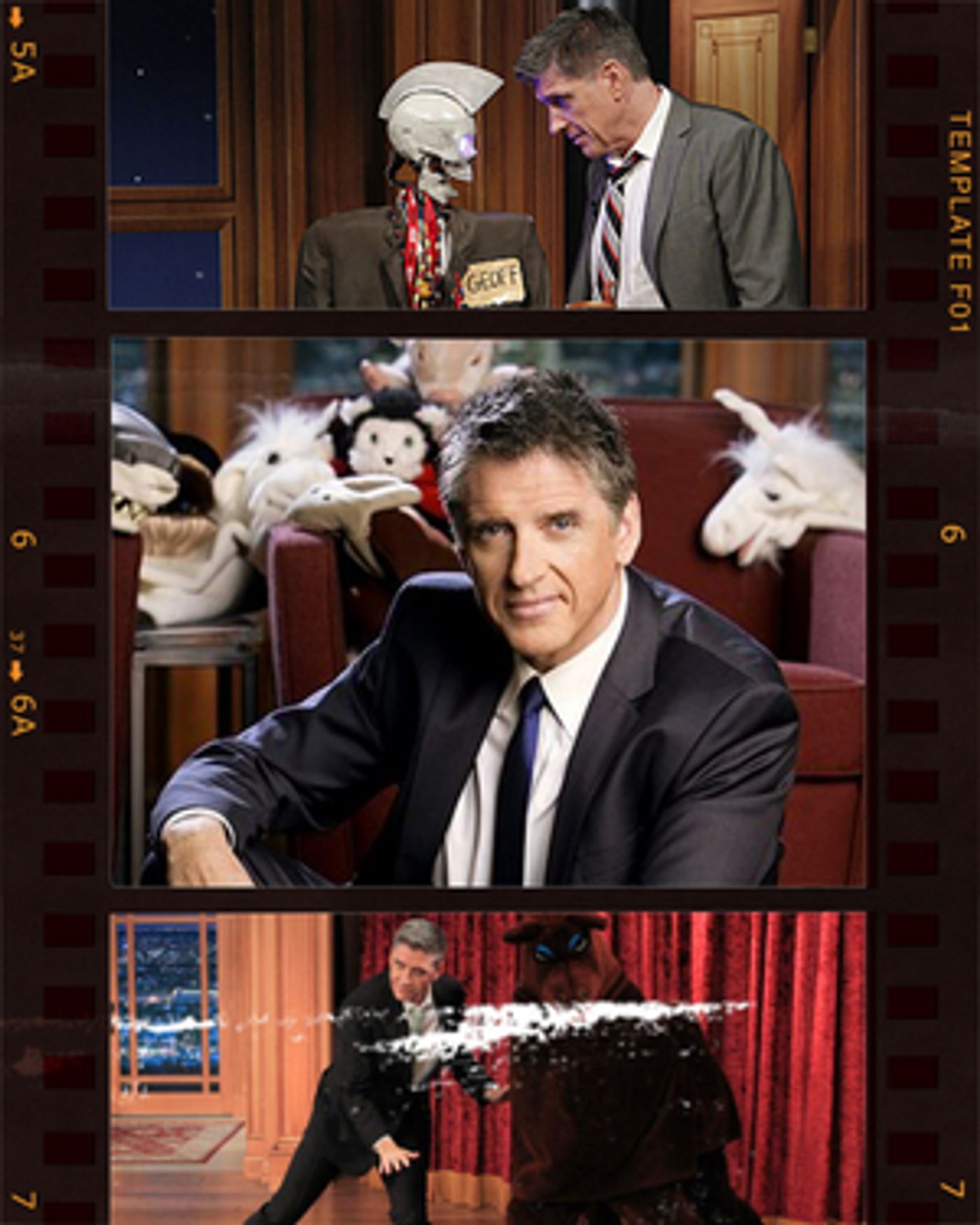BWW Blog: The Late Late (Puppet) Show
Craig Ferguson, His Sidekicks, and the Meaning of Puppetry

For about eleven months now, I have been watching any and every clip of The Late Late Show with Craig Ferguson I can get my hands on. I love everything about it, from the musical cold opens to the uninhibited interviews to the accents and impressions. Most of all, I love the puppets.
It wasn't until I started taking a course in puppetry for my college's January term, where I began learning about more esoteric methods and philosophies of puppetry, that I was able to fully appreciate the amount of puppetry that happened nightly in Ferguson's studio. When watching The Late Late Show now, I am struck by how it features puppetry in almost every form-including those we don't often perceive as puppetry-and how this work transformed the show from your average celebrity promotion machine into a nuanced commentary on the strange nature of the talk show exercise.
In "Approach," puppeteer Penny Francis writes "the puppet is a representation and distillation of a character, the repository of a persona perceived by both creator and spectator within its outward form. It can be any thing, any object, if brought to imagined life through the agency of a human player who inspires it and controls it directly." When I first read this a couple of weeks ago for class, it opened my eyes to all of the forms of puppet performance that I had failed to notice. A puppet is not simply a sock with a mouth or a green frog with floppy arms; it is any item (or idea of an item) that we choose to manipulate and tell a story with.
A robot skeleton could be a puppet. A pantomime horse could, too. I started to think about the other manipulated objects on the show-tangible props such as the telephone, which spewed the "voices" of celebrity callers, and imagined objects such as the Jay Leno Fly, an imagined fly that sounded uncannily like Jay Leno. Visible or invisible, controlled personally or from afar, all of these regular characters on the show were masterclasses in puppetry. They involved the skilled manipulation of space and object, the total commitment of both Ferguson and the puppeteers to the reality of the situation, and putting another consciousness, separate from yet connected to one's own, into the world.
The TweetMail segment was the most impressive part of show, both in terms of the skill required to pull it off and also in terms of the way it spoofs itself. Ferguson and the puppeteers presented a naturalistic and lightning-quick, if somewhat bizarre, rendition of late night television by taking a fairly traditional talk show segment-that is, listener mail-and turning it into a parody of itself by very rarely offering productive advice. Instead, Ferguson and Geoff Peterson (puppeteered by Josh Robert Thompson) instead use the listener questions as the basis for their riffs. Thompson puppeteers Geoff (while simultaneously reeling off celebrity impressions through the telephone) in such a naturalistic manner that it is hard to believe that Ferguson does not have a sentient robot skeleton standing behind a podium at stage right.
Meanwhile, Secretariat, a pantomime horse puppeteered by Joseph Bolter and Ryan McGowan, made a great case for the power of silent puppetry. Secretariat spent most of his time in his stable at stage left and never spoke, his face forever frozen in a maniacal smile. In spite of this, Secretariat had a well-developed personality, with his
own quirks and attitude. The thoughts and feelings that Secretariat was able to convey with a simple turn of the head or kick of the hoof are just as fully-formed as Geoff's, or even Ferguson's. We see the human legs emerging from Secretariat, but we choose to indulge in the illusion of the horse. Secretariat shows us our infinite ability to believe, to fill in the details with our imagination.
Ferguson's important part in the delicate balance of this performance should not go unappreciated, either. He holds his own against a robot skeleton puppet and a nonverbal pantomime horse, engaging them in the comedy while still maintaining a natural performance that makes it hard to believe that his sidekicks aren't independent, sentient beings. He also performed most of the recurring hand puppet characters, such as Sid the Cussing Bunny, demonstrating his own skill in puppetry.
Beyond making people laugh every night, The Late Late Show is an exercise in suspension of disbelief. It makes us think about existence. Geoff and Secretariat, the "people" that we fell in love with, are dead objects. Despite this, we treat them as if they're as alive as Ferguson, buying into their livelihood with full conviction. Puppetry may seem like a mere visual gag or children's pastime, but the fact remains that it makes us question the very nature of our being. Puppetry allows us to say things we wouldn't usually say and think things we wouldn't normally think. And, in the end, so did The Late Late Show.

Videos


